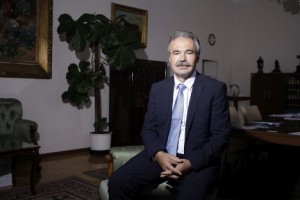Hungary September trade surplus revised down to EUR 830m

Hungary had an EUR 830.3m trade surplus in September, the Central Statistics Office (KSH) said. The surplus was revised down from EUR 847.3m in the first reading published on November 8. Exports rose 7.2pc to EUR 7.335bn from the same period a year earlier.Imports were up 6.2pc at EUR 6.505bn. Export volume was up 12.7pc. Import volume rose 11.7pc. In January-September, Hungary’s trade surplus reached EUR 5.398bn, growing a slight EUR 67.2m from one year earlier. Exports increased 3.6pc in volume terms and 1.6pc in euro terms to EUR 60.872bn. Import volume was up 4.1pc and euro-term imports rose 1.1pc to EUR 55.474bn. Forint prices were down 0.9pc in imports and fell 0.3pc in exports in January-September from the same period a year earlier. Terms of trade improved 0.6pc. The forint weakened 1.8pc to the euro and strengthened 0.9pc to the dollar in the period. January-September exports and imports of machinery and transport equipment rose in euro terms by 1.6pc and 1.2pc, respectively, largely because of the automotive segment, where exports rose 18.5pc and imports were up 11.6pc, KSH said. Telecommunications and recording equipment exports were down by 10.4pc, and imports in the category fell 3.7pc in euro terms. Exports and imports of manufactured products were up 5.8pc and 5.5pc, respectively, in euro terms in the first nine months from a year earlier. The export increases were supported by the pharmaceutical segment. Import growth in the sector was supported by imports of rubber products. Trade in plastics in primary forms and in essential oils and cleaning preparations increased substantially in both exports and imports. Hungary’s energy imports were down 2.2pc as imports of crude oil and crude oil products rose 2.2pc and imports of natural gas fell 2.5pc. Energy exports fell 12.8pc in euros. Food, drink and tobacco exports fell 1.4pc in euro terms in the first nine months as exports of grain and grain products fell 23.3pc and imports rose 2.4pc in the period. Gergely Suppan, chief analyst for Takarekbank, said exports were lifted by production of the new Mercedes CLA model at Daimler’s plant in Kecskemet. He put the surplus for the full year at EUR 7bn. Erste Bank analyst Gergely Gabler also attributed the big trade surplus in September to ramped up output at the Daimler plant as well as at Audi’s plant in Gyor. He put the full-year surplus at EUR 6.75bn, but added that it could reach as high as EUR 7bn if exports continue to rise at a faster pace than imports, as they did in Q3.











Vélemény, hozzászólás?
Hozzászólás küldéséhez be kell jelentkezni.